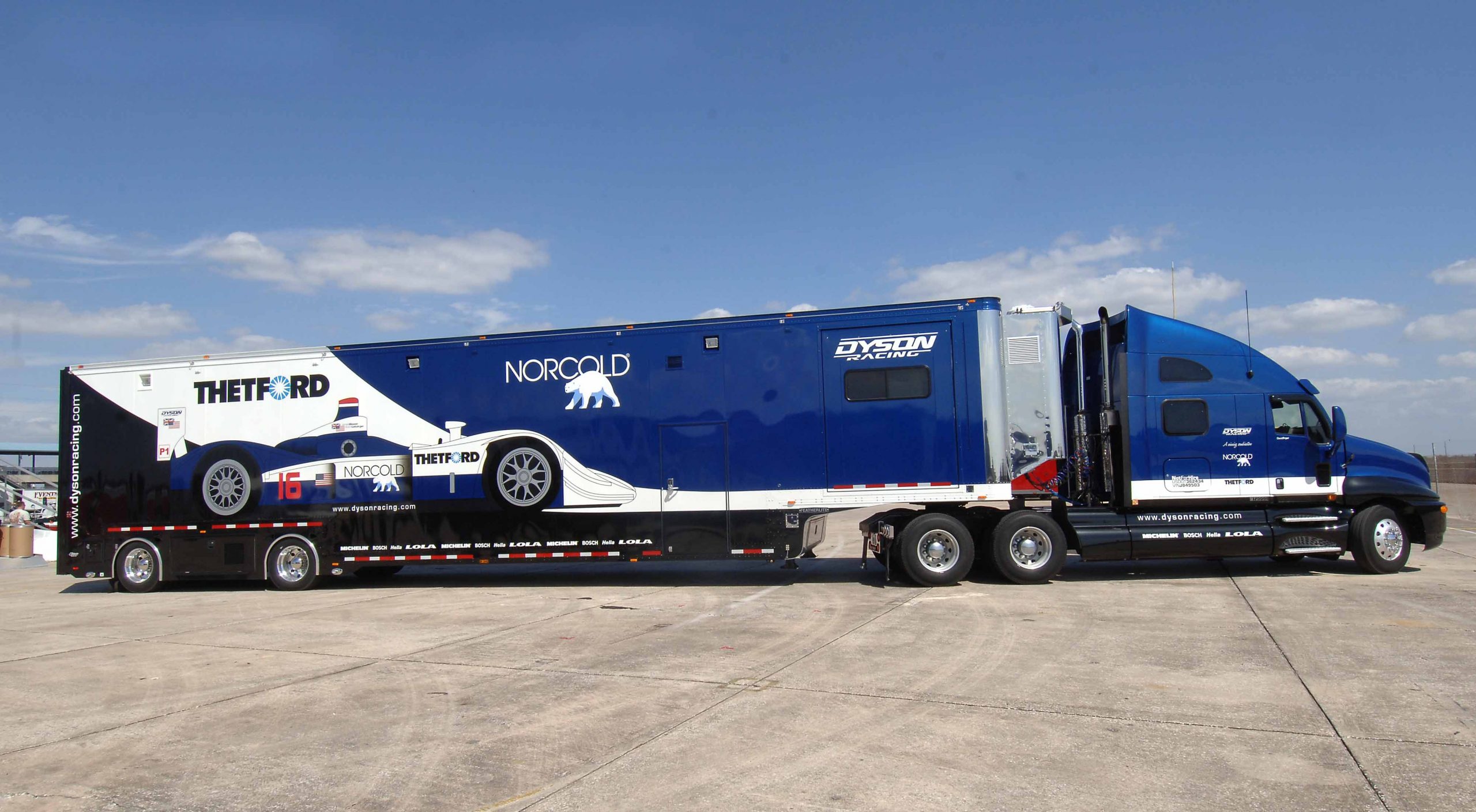POUGHKEEPSIE, NY, MAR. 12, 2004 — Sportscar racer Rob Dyson credits an inter disciplinary approach with helping him achieve success in two seemingly disparate areas of endeavor- auto racing and business.
Dyson is well known in the motorsports community both as a driver and as owner of the most successful sportscar-racing team of the past 20 years. But not everyone who follows the blue-and-white racers on the track is aware that Dyson is equally prominent in the business world, as the Chairman and Chief Executive Officer of Dyson, Kissner, Moran Corporation, a privately-owned,international multi-industry holding company. And according to Dyson, his experiences during three decades as a racer and for four decades in the corporate world have cross-pollinated one another.
“It starts at the most basic level,” Dyson noted. “In both racing and business, you must compete. And to be competitive you need the right `hardware` – in racing that means the right chassis, tires and engine, and in business the right manufacturing facilities and equipment -and `software,` which is the people. In racing, specifically, that is the guys twisting the wrenches and the guys turning the (steering) wheel.”
The second factor that Dyson identifies, and one that is characteristic of the sort of lean organizations that he oversees in business and in racing, is the need for efficient and effective internal communication. “In both business and racing you absolutely need to have a team that communicates effectively internally, so that the inevitable problems that come up are solved,” Dyson noted. “And solved quickly! In the end you need a team that is cohesive and where everyone communicates with everyone else on the team.”
Everybody`s Talking
According to Randall Kelsey, that is one of the areas he is focused on since being appointed Team Manager last year. “The Lolas we are racing now are more complicated than the cars they replaced. More than ever it is important that everyone on the team be talking to everyone else. We all need to be on the same page.”
And that is really the essence of teamwork, both in racing and in business. Or as Rob Dyson puts it, noting a third factor common to both, “The agenda has to be short – simple, clear and spelled out – and everyone has to buy into it. Every person on the team, regardless of their discipline, has to embrace and suppor tthe core goals. In racing that is winning championships; in business it is winning long-term relationships with customers. Everyone on the team has to have the same ethos, and work toward the objective.”
It is clear that the drivers and crew at Dyson Racing do in fact embrace the team`s goals; in a sport where crew members and drivers seem to change with the weather, people tend to stay at this team for a long while. At the age of 26, Team Manager Kelsey is beginning his 11th season with the team. Chris Dyson, the 2003 American Le Mans Series LMP675 champion, who is the same age as Kelsey, is the junior-most of the team`s fourdrivers. And Chris is starting his fourth season. The other three primary drivers- including James Weaver, Butch Leitzinger and Andy Wallace – have been associated with the team for more than a decade each.
Not that the younger Dyson, who is a real estate developer in his life away from the track, is not as imbued with the team`s values as his more senior colleagues. “Rob came to business as a young man out of college, and to racing a few years after that,” Chris noted. 7quotBecause of Rob`s involvement, I grew up around both. I can hardly remember a time when I was not going to the track with my dad, or at least hearing about his racing. None of what Rob talks about when he compares racing and business comes as any surprise to me – I think I picked most of it up through osmosis while I was growing up.”
Staying Flexible. The Role of Change
In one last comparison, which is also perhaps advice as well as an observation, Rob Dyson notes a last factor that is key to success in the business world or on the race track. “You have to be constantly updating yourself,” he said. “What is good enough this week is not necessarily good enough next week. In some cases your whole plan needs to be scrapped and you have to move on to something else.”
Given the longevity of the team`s personnel and the seemingly cautious approach the team has taken to changing directions, the passage above may come as a bit of a surprise to fans and others who follow sportscar racing.
“But really, it should not,” said Chris Dyson. “We do not make precipitous changes, but when it is the right thing to do, we do not hesitate.” Dyson, who as Sporting Manager is in effect Dyson Racin`s chief operating officer, noted that in the transition from the Riley & Scott chassis the team had raced for several years to the Lola it now campaigns, there were several changes in key personnel. “We are never afraid of change; we just always want to make sure that each change is moving us in the right direction.”
So far, it seems it has.



